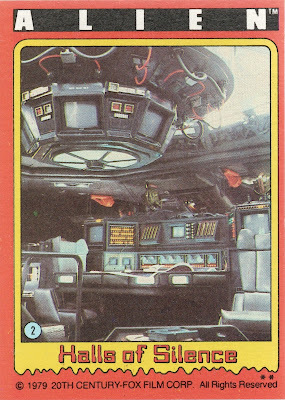Chadwick H. Saxelid's Blog: Ghoulies, Ghosties, and Long-Leggedy Beasties, page 53
December 2, 2024
Stanley (1972) - Movie Review
"People just don't understand friendly rattlesnakes."
Tim Ochopee (Chris Robinson) returns from Vietnam wanting little, if anything at all, to do with people. He keeps himself sequestered in an isolated shack buried deep inside the Florida everglades. His only company being the many snakes he has managed to befriend and now cares for.
Enraged when his beloved snakes start being hunted and killed, or captured and exploited, Tim decides to have his pet rattlesnake Stanley do a little hunting and killing of his own.
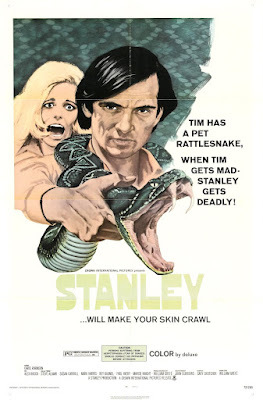
The sole reason Stanley was able to slither its way into my movie collection was due to its disc being packaged with Horror High. Thus creating the kind of exploitation double-feature package one might have seen at the local drive-in, way back in the mid-1970s.
Stanley is the second of four killer snake movies I have childhood memories of. Number one, though, is 1973's Sssssss, which was a syndication staple. Then comes Stanley, because I remember being freaked out by one of its TV spots. Third is 1976's Rattlers, while fourth is 1981's Venom. This aside completes the memory lane portion of my review.
Coupling Stanley with Horror High does make sense, though. Both came out within a year of one another and both were distributed by Crown International. That means there was a better than average chance they played as an actual double-feature at some point.
Producer-director William Grefé, in the bonus features, shares how he was inspired to create Stanley after seeing the success of Willard. That the film's story came to him in a vivid dream. Maybe that story is true, maybe it is not. But the similarities between Stanley and Willard go beyond them just sharing a namesake title.
First is the antagonists all having a personal connection with protagonist's deceased father. Second is the tragic death of one the protagonist's beloved pets driving him over the edge. In Willard it was the white rat Socrates. In Stanley it is Stanley's mate Hazel and their children.
Wait... I'm no herpetologist, but I do know that reptiles are not known for being all that doting as mates or parents. But, it's just a movie... and a knock-off of Willard. So this makes the snake Stanley the reptile version of Willard's rat Ben, who just so happened to get his own namesake movie. Go figure.
Stanley could best be described as a film with an interesting character that is in dire need of a study. Star Chris Robinson does what he can with the paper thin material he has to work with, but there is precious little he is ever given to do.
Although this movie predates Jaws by three years, think of the dramatic boost it could have gotten if Tim, after discovering Hazel and the children have been killed, pours his heart out to Stanley via an Indianapolis story-style monologue, connecting the slaughter with something he either did or witnessed in Vietnam.
Wait, there is a moment in the film that comes very close to doing that. It is when Tim shares the dinner table with Hazel and Stanley, feeding them mice while he has a vegetarian meal. He voices his wish that they could become vegetarians like him. That they would not have to kill another animal in order to eat. The opportunity was right there. So close. So. Very. Close. Too bad they missed it.
Which leaves us with the slaughtering of the antagonists. There is a great scene involving quicksand, one not so great bit involving a couple in a bed, and a laugh out loud moment where co-star Alex Rocco, while preparing to jump into a snake-infested swimming pool, looks around at everything but the pool he's about to jump into.
Then there's that freeze frame. That glorious and goofy freeze frame. Oh, and Alex Rocco was not acting in that pool. The poor man was terrified of snakes and Grefé did not pass on the opportunity to exploit that for bigger and louder screams from the actor.
Having given Stanley a quasi-reluctant revisit (I remember watching it once on Creature Features, when John Stanley was the host) I doubt I will be making another. So it goes.
The Blair Witch Project (1999) - Trading Card #5
August 1825, one year after Blair was reborn as the town of Burkittsville. Eleven witnesses testified to seeing a pale woman's hand reach up and pull ten-year-old Eileen Treacle into the shallow waters of Tappy East Creek. Her body was never recovered. For thirteen days after the drowning, Tappy Creek was clogged with oily bundles of sticks and the water soon became fouled and unusable. Front: A mid-19th century illustration of the Eileen Treacle incident.
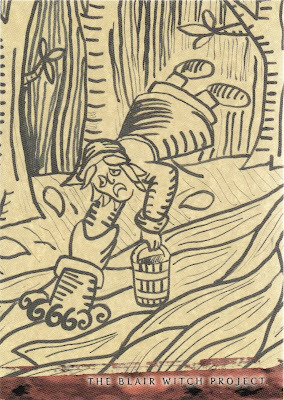 Eileen TreacleI'm no art historian, but this illustration does not invoke the mid-19th century for me. Yes, I know it is an insignificant knit to pick at, but...
Eileen TreacleI'm no art historian, but this illustration does not invoke the mid-19th century for me. Yes, I know it is an insignificant knit to pick at, but...The story behind the illustration does succeed at adding another creepy flourish to the Blair Witch's spooky backstory.
Alien (1979) - Newspaper Ad
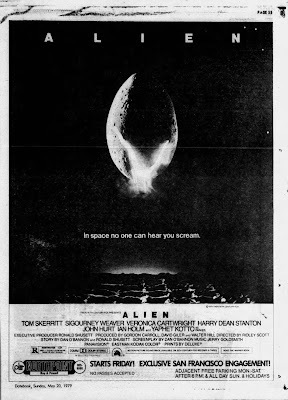 San Francisco Examiner - Sunday, May 20, 1979While I had to wait for what seemed like an eternity for Alien to open at a theater or drive-in near me in the East Bay in June, an exclusive San Francisco engagement rolled out in May. No fair!
San Francisco Examiner - Sunday, May 20, 1979While I had to wait for what seemed like an eternity for Alien to open at a theater or drive-in near me in the East Bay in June, an exclusive San Francisco engagement rolled out in May. No fair!
December 1, 2024
Necroscope by Brian Lumley - Book Review
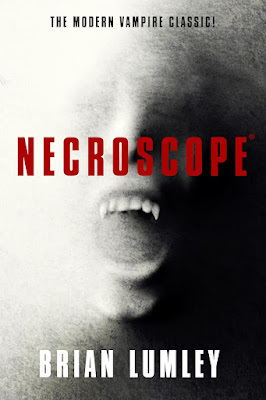 The very first thing I had to do after finishing Necroscope was listen to the theme to Lifeforce (1985). Why? Because there was no better way for me to ride the insane high that this novel's bonkers and breathtaking amount of chaos, carnage, and confounding metaphysical twists and turns had just gifted me with.
The very first thing I had to do after finishing Necroscope was listen to the theme to Lifeforce (1985). Why? Because there was no better way for me to ride the insane high that this novel's bonkers and breathtaking amount of chaos, carnage, and confounding metaphysical twists and turns had just gifted me with. Although this novel predates Tobe Hooper's delirious and over-the-top vampire opus by some three or so years, Lifeforce is far closer in style, tone, and approach to Lumley's pulpy joyride of a novel than it was to its credited source material, which was a cerebral science fiction novel by Colin Wilson with the pulp sounding title The Space Vampires.Necroscope tells the stories of two very different men. One is a Soviet necromancer named Boris Dragosani, who has been given the power to yank and rip secrets out of the dead in exchange for helping awaken a long-imprisoned vampire. The other is Harry Keogh, a young man born with the ability to commune with the dead in a far kinder, gentler and constructive manner. Their powers will, in time, bring them face-to-face in a bloody conflict to decide whether the world will be saved or subjugated.
As much fun as it was for me to read, there were a couple of drawbacks to Necroscope I feel need pointing out.
First, if a natural or realistic style of writing and storytelling is your thing, then Necroscope will not be for you. Brian Lumley cannonballs into the deepest end of the Romanticism literary pool and haves at it. You will either go with the theatrical fireworks, or you won't.
Because nobody, and I do mean nobody, in this book acts or sounds in anyway like a real human being. Even as far back as 1982, when the book was first published in the UK, and 1988, when it was first published in the United States, Lumley's prose would have read as melodramatic, over-the-top, and purple as all get out.
That is, admittedly, a highly subjective drawback.
Second, and far more damaging and not at all subjective, is the questionable sexual politics that are displayed in the book. The female characters throughout are either feisty, aggressive harlots or adoring, supportive mother figures. Which is... problematic, at best.
I am sure some might argue that Lumley was purposeful in using cartoonish embodiments of the Madonna-whore complex in Necroscope, but even that read is a troublesome one. Because, in the story, the female characters only exist to either support and nurture Harry Keogh or to tempt and torment Boris Dragosani.
So, yeah. That is a drawback that will be a contemptuous deal-breaker for quite a few readers. Yet I still managed to have fun reading what, at heart, is just James Bond vs. the Army of Darkness.
November 30, 2024
Aliens (1986) - Soundtrack Collection
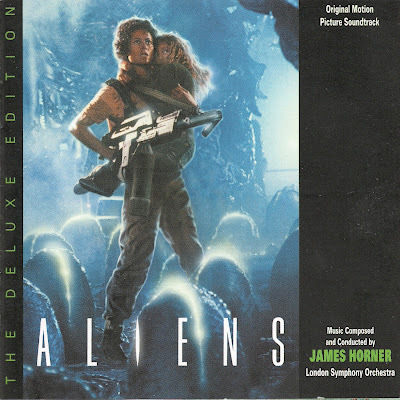
Although there had been talk and an intention of doing an Alien 2 as early as late 1979, when it was clear to the producers and distributors that Alien was a bona fide hit, seven years would pass before the long desired sequel managed to get made and released into movie theaters across the globe.
Despite there being both a different director (James Cameron) and composer (James Horner) this time around, it seems that history would repeat itself. As Horner's score would be truncated, rearranged, and even replaced in the final version. According to Nick Redman's detailed liner notes, "no cue, save for the Main and End Titles, are where they should be, and no cue (except for Bishop's Countdown) plays in its entirety as it was written." So it goes.In an irony that I am sure neither James Horner or Jerry Goldsmith appreciated, two selections from Goldsmith's score for the original Alien were used in Aliens. Sleepy Alien and a snippet from Parker's Death.
November 29, 2024
Horror High (1973) - Movie Review
"Vernon, that is you, isn't it?"
Biology and chemistry obsessed high schooler Vernon Potts (Pat Cardi) would like nothing more than to work on his experiment, but everyone and everything just keeps getting in his way. Miss Grindstaff (Joy Hash), the English teacher, demands equal attention be paid to the subject she is teaching. Jock classmate Roger (Mike McHenry) ridicules and bullies Vernon relentlessly. Worst of all is the cat kept by Mr. Griggs (Jeff Alexander), the school janitor. That pesky animal keeps trying to have Mr. Mumps, the lab guinea pig and sole subject of Vernon's experiment, for lunch.That all changes when Vernon discovers that his experiment has created a body altering formula. One that gives him the power to eradicate his tormentors.
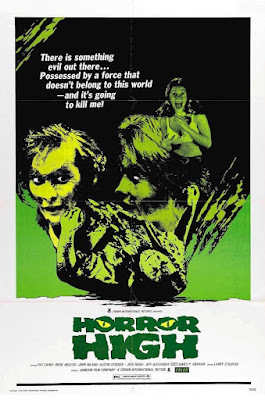 Horror High is one of a baker's dozen or so films, give or take, that imprinted on me as a child. I am reasonably certain that the first time I saw it was when its TV version, titled Twisted Brain, played on KTVU's Creature Features, back when Bob Wilkins was hosting the show. I think it might also have aired as Horror High on occasion, but I'm not sure.
Horror High is one of a baker's dozen or so films, give or take, that imprinted on me as a child. I am reasonably certain that the first time I saw it was when its TV version, titled Twisted Brain, played on KTVU's Creature Features, back when Bob Wilkins was hosting the show. I think it might also have aired as Horror High on occasion, but I'm not sure.Revisiting the film some forty plus years later, I was surprised at just how clear my recall of the film was. There were several scenes that I had a photographic recall of and they looked and sounded no different than my memory of them. No small feat, that.
But does Horror High hold up? Well, yes and no. On the plus side... Larry Stouffer's direction is tight, focused, and on point. J.D. Feigelson's screenplay structuring is rock solid, even if its logistics are weak and in dire need of strengthening. Austin Stoker is terrific as Lieutenant Bozeman, the cop tasked with trying to find out who is slaughtering the high school staff. Also good is former child actor Pat Cardi, as Vernon Potts, in what would turn out to be the penultimate acting job of his career.
On the negative side... the film's budget is located somewhere underneath the basement and, according to its trivia page on the IMDB, it was shot in just two weeks. Which explains and, for people like me, excuses the inadequate amount of coverage in a number scenes, the limited amount of locations, and the minuscule size of the cast.
According to screenwriter J.D. Feigelson, who used the pseudonym Jack Fowler on the feature for professional reasons, after the idea for a I Was a Teenage Jekyll and Hyde style horror picture came to him, he wrote an outline and then a first draft. That first draft is what was sold and shot. No notes and no revisions, it seems. Which explains why, as I noted before, that the nuts and bolts of the story structure are solid, but a lot of dialogue and characterization would have benefited from a bit of a polishing, here and there.
Whether anybody else would deem to take this cheap and quirky piece of regional horror with any degree of seriousness is moot, to me. I am just happy that, in this instance, my fond memories proved to be well founded.
November 27, 2024
The Return of the Living Dead - A 500 Piece Puzzle from Trick or Treat Studios
November 25, 2024
Alien (1979) - Trading Card #2
The Whispering Gallery - Newspaper Ad
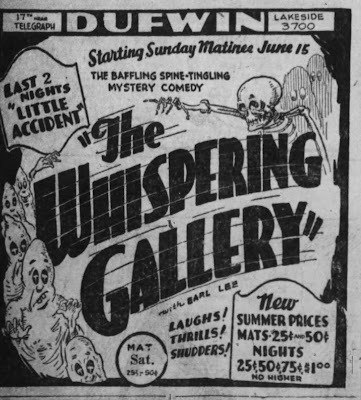 Oakland Tribune - Friday, June 13, 1930
Oakland Tribune - Friday, June 13, 1930An article printed in the Saturday, June 14th edition of Oakland Tribune boasts that "thrill succeeds thrill with secret panels, ghostly apparitions, clutching hands and cloaked figures."
Yes, this is yet another "Old Dark House" mystery-comedy for the stage. Written by Percy Robinson and Terence De Marney, The Whispering Gallery is set in an old manor in Cornwall, England that has a murder in its history.
That history appears to be repeating itself when the murderer's son is found dead at a party being held at the manor. I think it would be fair to wager that the "murder" is an elaborate ruse meant to uncover a long buried secret so that the son can unmask the true killer and exonerate his father.
November 24, 2024
Alien (1979) - Soundtrack Collection
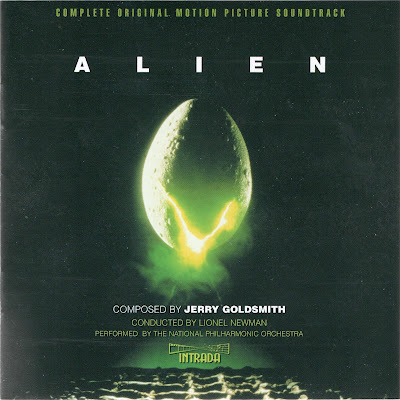 1979 was the year that I "discovered" Jerry Goldsmith, because I got the soundtrack albums for both Alien and Star Trek The Motion Picture for Christmas. Up until then the only film composer's name that I was familiar with was John Williams, who had provided the memorable score for my favorite movie of all time, Jaws. More on that later...
1979 was the year that I "discovered" Jerry Goldsmith, because I got the soundtrack albums for both Alien and Star Trek The Motion Picture for Christmas. Up until then the only film composer's name that I was familiar with was John Williams, who had provided the memorable score for my favorite movie of all time, Jaws. More on that later...As for my discovery of Goldsmith... 1979 would also be the year I figured out that there were people behind the camera responsible for creating and crafting the movies and television programs I was watching and, more often than not, enjoying. It was when I started to pay closer attention to all the names listed in both the opening and ending credits.
I had not seen Star Trek The Motion Picture, but was a big fan of the show, which is no doubt why my parents chose to give me that particular soundtrack album. Alien, however, had been one of the most impactful cinematic experiences of that year for me. (John Carpenter's Halloween would be the other one. But that is yet another subject for another post at another time...)
I do not know if it was on Christmas Day itself, but I do remember the jolt when I first noticed that the very different sounding scores for both Alien and Star Trek The Motion Picture had been composed by the very same man. Whoa.
Film editor Terry Rawlings temped his working cuts for Alien with as much of Goldsmith's past music he felt would communicate the kind of mood he and director Ridley Scott wanted for the film. The composer, who disliked temp tracks, did not appreciate Rawlings efforts. Goldsmith would also be infuriated and insulted at Rawlings and Scott's decision to retain the temp music for three sequences and the end titles in the finished film. Those three sequences utilized pieces taken from Goldsmith's Oscar-nominated score for Freud (1962), while the end credits were accompanied by a section from Howard Hanson's Symphony No. 2.
That is why the first time I listened to the Alien soundtrack, on that Christmas Day way, way back in 1979, hearing music that I did not recognize at all was a disconcerting and disappointing surprise.
12-year-old me was confounded and frustrated by all this unrecognizable music. Especially the Main Title. Where was the weird and haunting music that had played over the opening credits in the movie? I wanted to hear what had been in the movie. I did not know that this was the music Goldsmith had composed for the movie and, for a variety of reasons, had not been used.
Even though Goldsmith liked to grumble about his scores being collected as if they were bottle caps. About said collectors wanting each and every note of music, regardless of its quality or meaning. What he might not have realized, or understood, was how something he might have found unimportant, or unrepresentative of what he was doing with the score, could be very important to a listener, or fan, such as myself.
What imprinted on me was the Main Title used in the film. Which is included in this 2007 release from Intrada that contains every note Jerry Goldsmith composed for the film.
While the film version's inclusion was appreciated by adult me, and would have been adored by 12-year-old me, I now understand Goldsmith's frustration with how his subtle approach to the opening of the film was dismissed and discarded. That he was made to do something obvious. In the liner notes Goldsmith laments, "The original one took me a day to write, and the alternate took me about five minutes."
Now that I have had the chance to listen to them side by side, adult me can hear the difference. There is real craft and passion in the original version, while the alternate is a professional, albeit passionless, work-for-hire piece.
Having each and every note can offer quite the education and I consider this 2-disc set to be one of the Crown Jewels of my soundtrack collection.
Ghoulies, Ghosties, and Long-Leggedy Beasties
- Chadwick H. Saxelid's profile
- 19 followers


